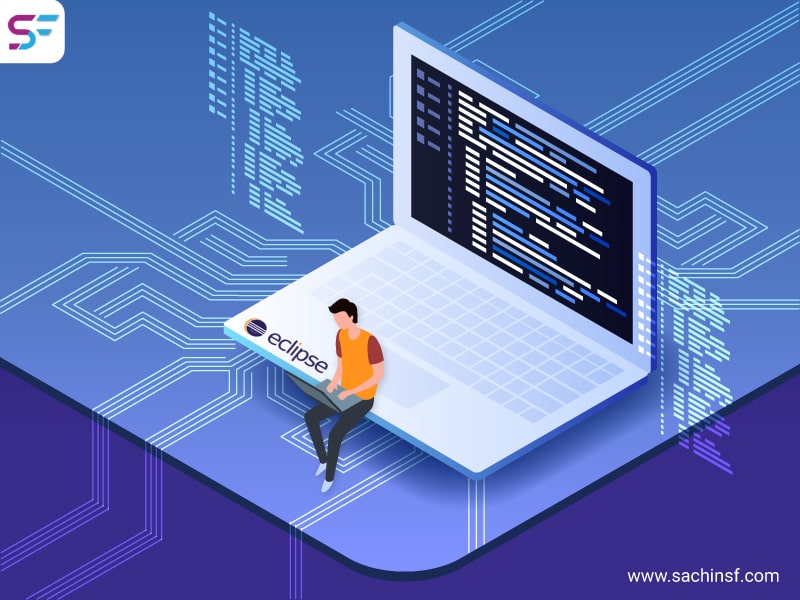Salesforce developers spend most of their time waiting for file saving operation to complete execution. It makes tasks difficult for the developers working on extensive Force.com projects that contain a large number of classes, pages, objects, and components.
Integrated Development Environment (IDE) is an application that provides end-user with an environment that is feasible for seamless application development. It includes an editor, plugins, syntax highlighter, debugger, and automation tools to ensure the smooth functioning of the applications. Some of the IDEs also support smart code completion.
What is Eclipse?
Eclipse is a developer tool that is widely used by developers for building robust applications. It is an open-source platform to develop applications using the Java programming language and other programming languages such as C/C++, Python, PERL, Ruby, etc.
Regardless of which platform you prefer to use for building applications, an IDE should be installed to provide additional, platform-specific functions. One such amazing IDE is Force.com IDE, based on the Eclipse platform.
After the installation process is completed, you need to install the Salesforce developed Force.com IDE to perform any actions with Salesforce metadata.
What is Force.com IDE?
Force.com IDE is a client application that is used to create, modify, and deploy Force.com and Salesforce-based applications. It is based on the Eclipse platform and builds robust mobile applications using Tooling API.
What are the requirements for installing Force.com IDE on Eclipse?
Operating Systems – You need to choose the right operating system to support and maintain the integration process.
Windows Version – Windows 8, Windows 9, Windows 10.
MAC OS Version – MAC OS 10.7, 10.8, 10.9, 10.10, or 10.11.
Ubuntu – Download the latest LTS version of Ubuntu, either 12.04 LTS or 14.04 LTS.
JDK and JRE – To work with Eclipse, you need the latest versions of Java Development Kit and Java Runtime Environment. You can download the latest versions from the Sun Microsystem website.
Eclipse IDE – You need to download the latest Eclipse version that supports your operating system too.
Steps to install Force.com IDE in Eclipse
Step 1: Launch Eclipse, select Help and Install New Software.
Step 2: Click Add.
Step 3: In the Add Repository dialog, set the name to Force.com IDE and
the location to https://developer.salesforce.com/media/force-ide/eclipse45.
Step 4: Click OK.
Step 5: To install an older version of the plug-in, deselect “Show only the latest versions of available software” option.
NOTE: Eclipse downloads the list of available plug-ins and displays them in the Available Software dialog.
Step 6: Select Force.com IDE.
Step 7: If you want to install the Apex Debugger or our tools for working with Lightning components, select Force.com Debugger or Force.com Lightning Support.
Step 8: Click Next.
Step 9: In the Install Details dialog, click Next.
Step 10: In the Review Licenses dialog, accept the terms and click Finish.
Step 11: If you choose to install support for Lightning components, Eclipse displays a warning dialog about installing software that contains unsigned content. You need to install third-party plug-ins to support Lightning components. Click OK to proceed.
Step 12: Eclipse downloads and installs the Force.com IDE and the required dependencies. When the installation is complete, you need to restart. Now, click Yes.
Step 13: When Eclipse restarts>>Open Perspective >> other and Select Force.com and then click OK.
You are now ready to build and customize Salesforce applications in Eclipse!
Conclusion
Eclipse is an open-source Java Integrated Development Environment (IDE) used for building and deploying high-quality applications.
The Force.com IDE is a powerful tool for deploying Force.com applications. It provides an iterative development process so that you can easily blend language support and other functionalities into any of our default packages. The Eclipse marketplace provides a listing of Eclipse-based solutions for unlimited customization and extension.




